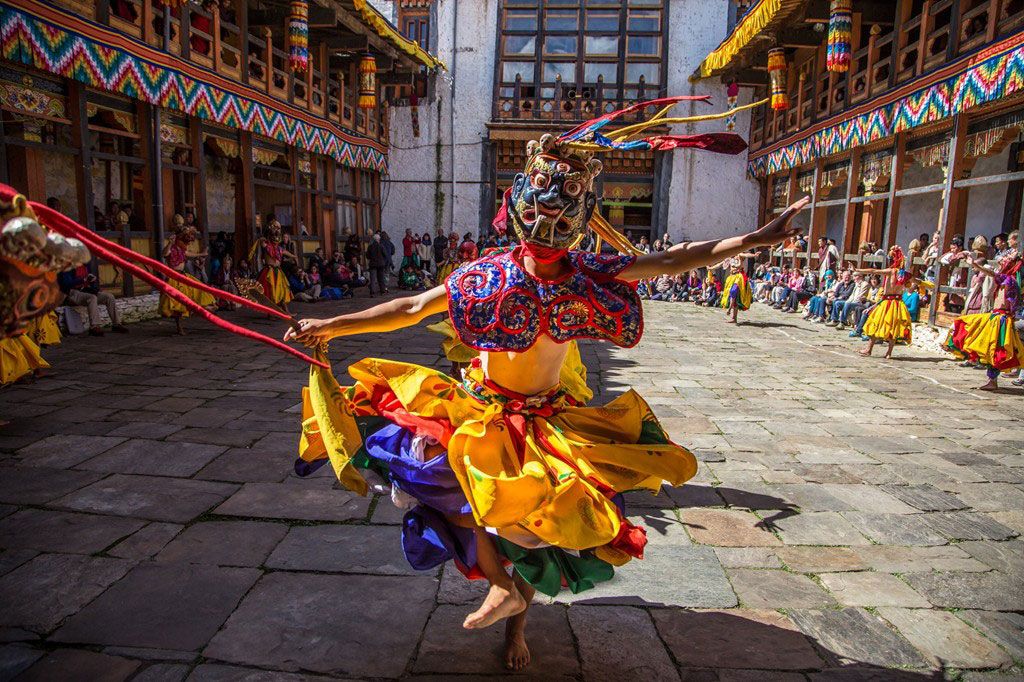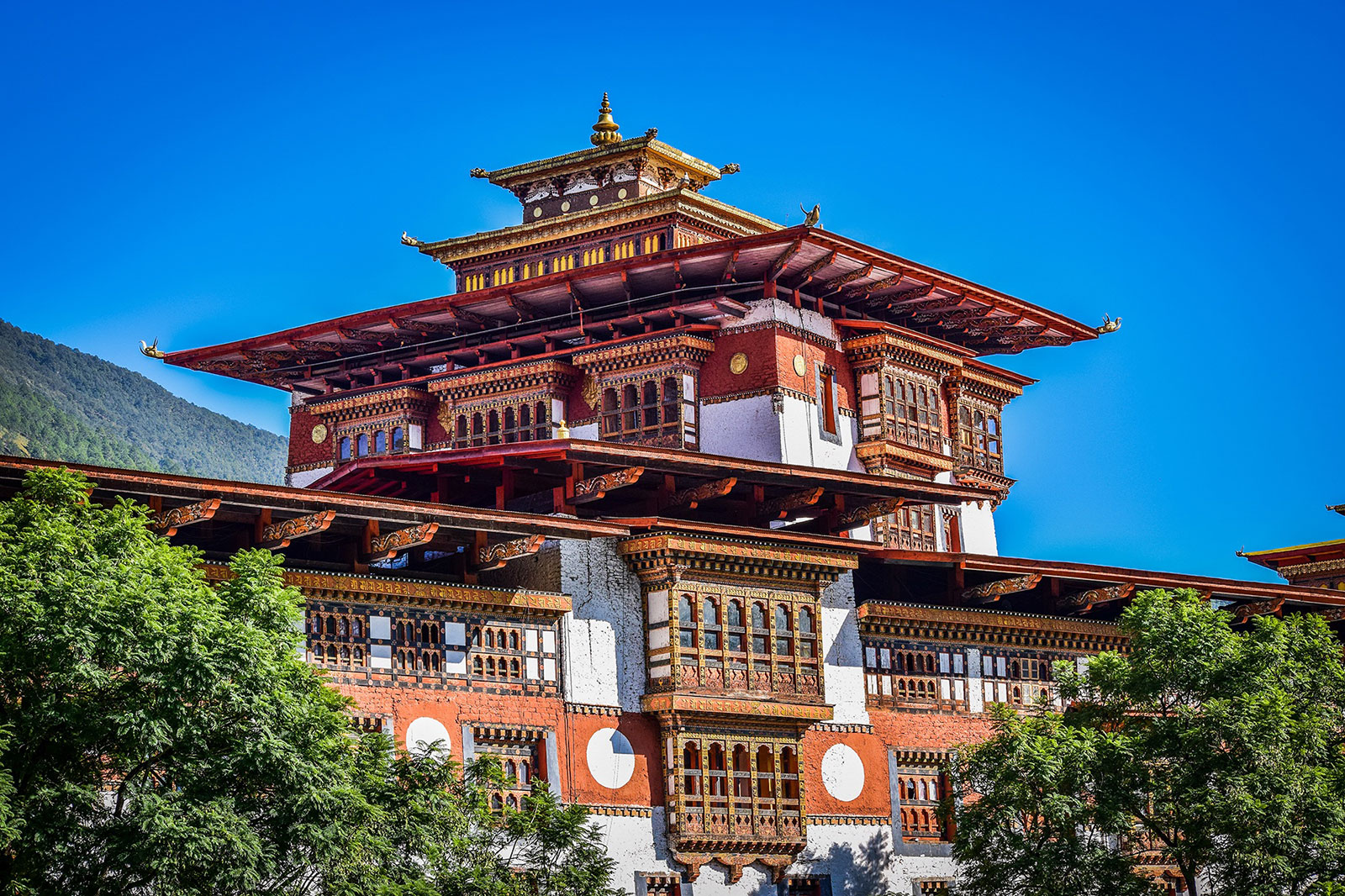People and Society of BhutanBhutan has a population of 0.6 million. The Bhutanese society is multi-ethnic and multi-lingual.
Ngalops: Ngalops live in western Bhutan and speak Ngalopkha. Agriculture farming is their basic occupation. They cultivate rice, wheat, barley, maize etc, among others. Apple is also cultivated as cash crop in the regions of Thimphu and Paro.
Lhotshampas: Lhotshampas are the inhabitants of Southern Bhutan and speak Lhotshamkha, which is the Nepali language. They practice Hinduism. There are also the Lhops, popularly known as Doyas. Agriculture farming is the main occupation of these ethnic groups. They also cultivate cash crops like ginger, cardamom, oranges, etc.
Brokpas : Brokpas or the semi-nomads of the villages of Merak and Sakteng who thrive on rearing yaks and sheep live in the extreme north eastern part of Bhutan. The language of the Brokpas is Bro-kad. In summer, they migrate with their yaks and sheep to the summer pastures and in winter they return to live in their houses. The house of Brokpa is normally built of stones and poorly ventilated to prevent the icy wind from entering the house. Due to harsh terrain and climate, Brokpas have limited opportunity to cultivate crops. Therefore, they barter with the Tshanglas of neighboring villages for their necessities. They also barter bamboo baskets and mats.
Tshanglas: Tshanglas (descendants of Lord Brahma), popularly known as Sharchops or the easterners who speak Tshanglakha or Sharchopkha live in the east of Bhutan. They are dependent on maize, rice, wheat, barley, vegetables and also rear domestic animals to supplement their living. Weaving is a popular occupation of women and beautiful fabrics mainly of silk and raw silk are produced.
Kurtoeps: The other category of people in the east is Kurtoeps. They are found in the district of Lhuentse and the settlements are spread along the banks of Kurichu River. Women of Khoma village are expert weavers and are well known for their skills in weaving the grandiose Kushithara.
Bumthaps, Mangdeps and Khengpas: These categories of people live in central pockets of Bhutan. They speak Bumtapkha, Mangdepkha and khengkha. The Bumthaps live in temperate region and cultivate buck wheat, potatoes and vegetables. Some Bumthaps rear yaks and sheep and produce fabrics of wool and yak hair. The Mangdeps live in warm temperate region and cultivate rice, wheat, maize, vegetables, etc besides rearing some domestic animals. The khengpas live in cool subtropical region and depend on crops similar to the Mangdeps. The Khengpas are well known for the bamboo products and cane craft.
Doyas: Doyas are settled mostly in southern Bhutan. They are originally the people of western and central Bhutan, who over the years have settled in the present areas in Dorokha. They speak in different dialect and wear unique dress.
Layaps: Layaps who speak the layapkha live in the extreme north. They are semi-nomads like the Brokpas of Merak and Sakteng. Their livelihood depends on yaks and sheep. The animal products are bartered with rice, salt and other daily necessities with the people of Wangdue and Punakha.
Brokpas: Brokpas are semi-nomads depending on yaks and sheep for livelihood. They speak in different dialect. Their own unique dress is made out of yak hair and sheep wool.
The Bhutanese society:
The Bhutanese society is open and free of class and caste system. In the 1950s, The Third King Jigme Dorji Wangchuck through a royal edict abolished the serfdom and slavery in Bhutan. Bhutanese generally are gender sensitive.
Bhutanese society generally sticks to some basic norms like Driglam Namzha, the traditional etiquette. The norm desires members of the society to have disciple and manners in their daily conduct. Some simple manners that synchronizes the society include wearing a scarf when visiting a Dzong, letting the elders and the monks serve themselves first, offering felicitation scarves when someone gets a promotion, greeting the elders or senior officials before they wish you, etc.
In the Bhutanese society, it is a bad manner to touch someone’s head or stretch your legs in public. This is because the head is considered sacred and legs impure.
Bhutanese greet each other by saying Kuzuzangpo. With slight bowing of head, the senior and elder Bhutanese are greeted by saying kuzuzangpola. At present, Bhutanese in urban areas shake hands to greet each other.









